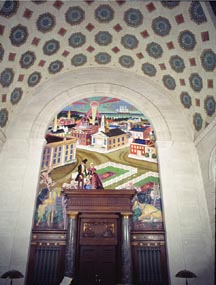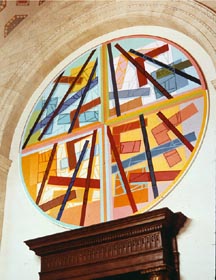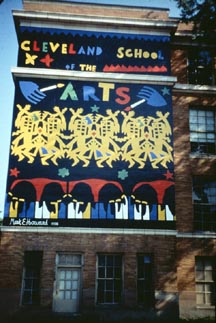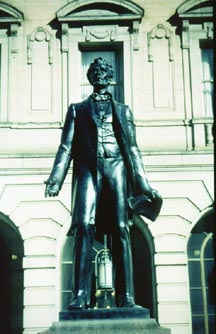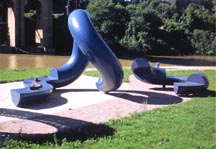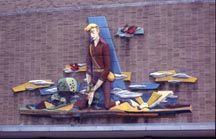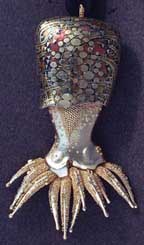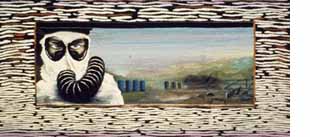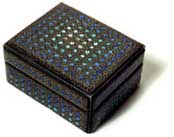 |
 |
 |
 |
 |
 |
 |
Research Topics |
| word tools |
| Word Tools For Understanding Art | |||
Word meanings are tools for understanding art. Here are some art words and their meanings to help you in choosing areas you would like to know more about. There is also a glossary of art words when you need to know more. There are things to think about as you look at art work. Start with the following pictures. Use your eyes. |
|||
| General
Anyone examining art work soon discovers that there are two very different types: |
|||
Representational art. You can recognize the subject and form because they have come from human or animal forms. This is called representational art. |
Nonrepresentational art. Artists are interested in the shapes of forms, the patterns and nuances of color and relationships among various aspects of form. |
||
Try this one: Can you see the differences? Talk to yourself about the ways in which these works differ. |
|||
| HELPFUL INFORMATION:Form is the summary of various factors such as line, plane, color, shading, texture, shape, mass or volume, scale, space. Composition or Design is the way in which the artist put these aspects together. You can soon recognize an artist's style by the way in which these things are put together in a work of art no matter the type or medium. | |||
| Public Art is art that can be seen in places outside or inside where people come and go or gather. These two pieces are in the Brett Hall reading room of the Cleveland Public Library. | |||
Try this one:Can you see the color relationship between theses two very different works of art? |
|||
The idea for the color in this nonrepresentational or abstract piece came from the representational piece.Artists ideas come from stories, things they see or remember, or just plain imagination. Sometimes we don't know exactly where artists have gotten their ideas. |
|||
| Specific Art | |||
| Each kind of art has a vocabulary that helps describe it more precisely. Painting, sculpture, textiles, ceramics, prints, multimedia. | |||
Try this one: Painting can be on wood, canvas, cardboard, and even inside or on the outside of a building. What surfaces did these artists paint on? |
|||
Artists can choose to paint with oil, watercolor, acrylic depending on the surface. Artists can also choose to make PRINTS OR PHOTOGRAPHS on paper or even cloth. Again, ideas come from the world around them, from stories, things they see or remember, or just plain imagination. Sometimes we don't know exactly where artists have gotten their ideas. |
|||
| SCULPTURE is all around us since most of it is outside. It can also be representational or nonrepresentational. It can be in the round as these two works are (you can walk all around it,) or on a wall when is called a frieze and you look at it like a painting. | |||
|
These are both in memory of famous people made about 50 years apart. |
|||
Try this one: Can you see by looking at the pictures the difference in the materials used?Think about bronze or clay or aluminum or steel.How would you describe the differences in these pieces. |
|||
|
The work of artists in metals, clays, enamel, fibers and fabrics, glass can also be representational or nonrepresentational. |
|||
Try this one: In the following images try to see if you can name the materials. |
|||
 |
|||
|
 |
||
| Try this one: Think about what might have inspired these artists. How are these artworks used? | |||
ARCHITECTURE Architecture is the art or science of building structures. Architects design structures for people---so that they can live and work in them. |
|||
 |
|||
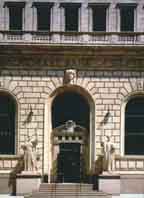 |
|||
The different parts of buildings have names. |
Try this one: These buildings can be seen in Cleveland . Think about what you see. What do you think happens inside? |
||
| These are some of the tools for exploring different art forms on this website. See what you would like to explore further and which artists you might like to talk to or find out more about. | |||
